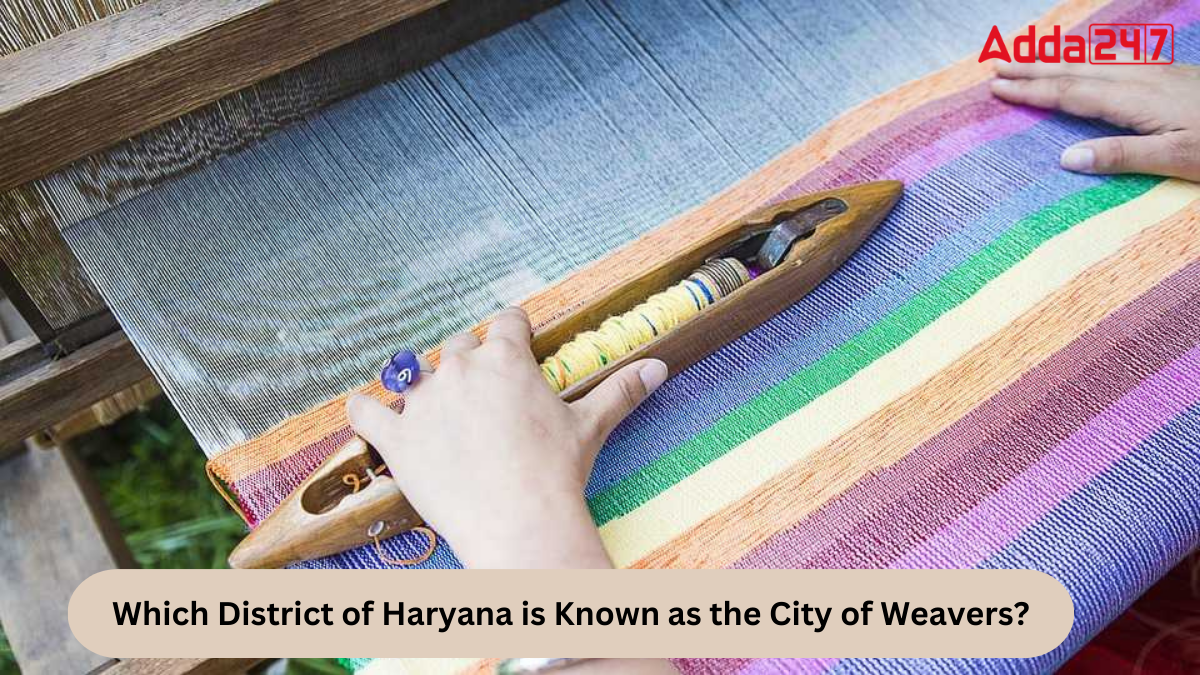Haryana is a state in northern India known for its cultural heritage and strong traditional roots. One of its districts has gained fame for being called the “City of Weavers” due to its significant contribution to the art of weaving and textile production. Below is an article explaining which district holds this special title and why.
An Overview of Haryana
Haryana is a state in northern India, created on November 1, 1966, after Punjab was reorganized. It covers only about 1.4% of India’s land area. The capital is Chandigarh, shared with Punjab, and the largest city is Faridabad. Gurgaon, another major city, is a key financial and technology center in India.
Administrative Divisions of Haryana
Haryana is divided into 6 regions, with 22 districts, 72 sub-divisions, 93 tehsils, 50 sub-tehsils, 140 community development blocks, 154 cities and towns, 7,356 villages, and 6,222 village panchayats.
Largest and Smallest Districts of Haryana
Sirsa is the largest district in Haryana, covering about 4,277 square kilometers, located around 250 km from Delhi. Faridabad is the smallest district, with an area of 741 square kilometers. Faridabad city, the district headquarters, was founded by Shaikh Farid, treasurer of Jahangir.
Which District of Haryana is Known as City of Weavers?
Panipat, located in Haryana, is famously known as the “City of Weavers.” It is a key textile hub in India and holds a significant place in the country’s weaving industry. Let’s explore why Panipat is called the City of Weavers and the various industries that make it special.
Why is Panipat Known as City of Weavers?
Panipat is known as the “City of Weavers” because it has a rich history in textile production, especially carpets and blankets. The city is home to many skilled weavers who produce high-quality fabrics. Panipat is also a major center for manufacturing shoddy yarn and recycling textiles, further cementing its reputation in the weaving industry.
Textiles and Carpets of Panipat
Panipat is renowned for producing high-quality carpets and blankets. These items are widely recognized for their durability and beauty. The city is also home to a thriving handloom weaving industry, which plays a major role in the local economy. Many skilled weavers work here, contributing to the production of fine fabrics and textiles.
Global Textile Recycling Hub
Panipat is often called the “cast-off capital” due to its role in global textile recycling. The city is a major center for recycling old textiles into usable fabric. This process helps reduce waste and provides an eco-friendly solution to the textile industry. Many countries send their discarded clothes to Panipat for recycling.
Other Manufacturing Industries of Panipat
In addition to textiles, Panipat is home to a wide range of manufacturing industries. The city has wool and cotton milling units, which process raw materials for textile production. Panipat also specializes in saltpetre refining, and the manufacture of glass and electrical appliances. These industries add to the city’s diverse economic profile.




 Which Country is Known as the Land of Ch...
Which Country is Known as the Land of Ch...
 Which Bird is known as the King of Birds...
Which Bird is known as the King of Birds...
 Which City of Austria is Known as the Ci...
Which City of Austria is Known as the Ci...







